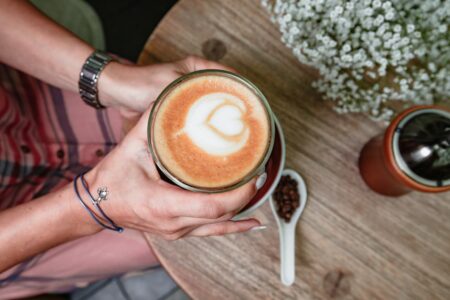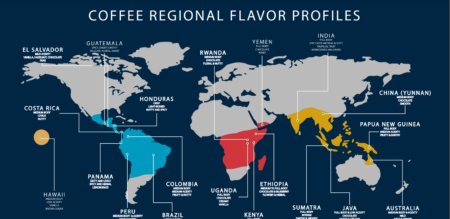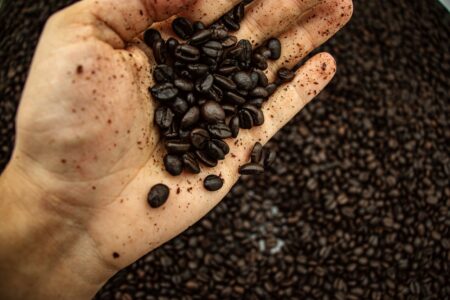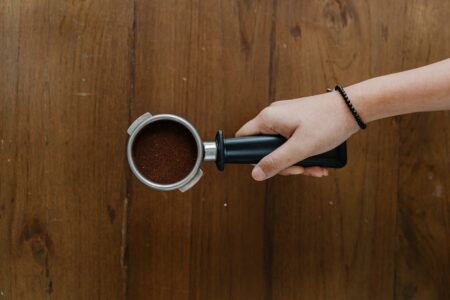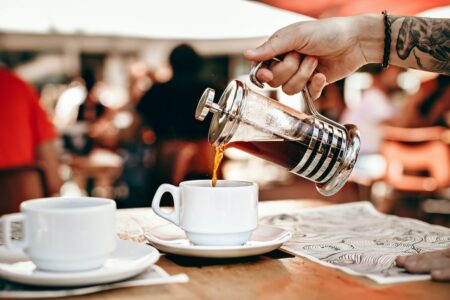How to Brew the Perfect Coffee: From Bean to Mug

With the increasing popularity of coffee and its ability to provide a daily pick-me-up, many are now looking for ways to make the perfect cup. From selecting the finest beans to finding just the right brewing method, there is an art to creating that perfect cup of joe. In this blog post, we're going to look at how you can create your own delicious brew from bean to mug with ease - no barista or fancy equipment needed!
Choosing the Right Bean
Making a cup of coffee can be an intimidating experience for the novice and a calming ritual for the enthusiast. Choosing the right bean is one of the most important components of creating a cup of great coffee. Different beans have diverse aromas, flavours, and caffeine levels that can have an effect on the overall taste of your brew. To determine which blend will suit your palate best, consider all aspects including acidity level, sweetness, body, intensity and aroma.
Choose from dark or light roasts depending on your preference and keep in mind that origin is important too – different regions or countries yield distinctive coffee qualities. Trust your taste buds and remember that only experimentation will help you find the perfect blend to enjoy in your home.
Types of Coffee Beans
From light to dark roasts, from acidic to less acidic blends, and from smoky to fruity notes - there truly is a coffee bean for everyone! Each type of bean offers up a unique profile of flavours and aromas, making them ideal for use in espresso machines, French presses and more. So whether you're an adventurous coffee-lover or just looking for something classic, dive in and explore the diverse world of coffee beans.
Caption: Map Courtesy of Torch Coffee
Roasting Levels of Coffee Beans
The beauty of fresh-roasted coffee beans is something to behold! Depending on how those freshly roasted beans are handled, the end product can vary drastically. Different roast levels bring out different flavour profiles in coffee. It’s important to note that light roasts have more of the original bean characteristics, whereas darker roast levels have more of a roasted taste that masks some of the original elements.
Light roasts provide bright, acidic flavours and will have a softer texture when a ground for brewing. On the other hand, dark roasts tend to produce a bolder, smoky profile with lower acidity and a hard grind for espresso machines. If you’re looking for something different each time or just want to try something new – take advantage of all the different roast levels available!
Buying Quality Coffee Beans
Coffee has become an essential part of everyday life, so it's important to make sure that you're getting quality beans when shopping. Buying the right beans can heighten the flavour and aroma of your coffee, providing a much better experience each time you brew some. It's worth researching the different regions where different beans are harvested and understanding how those flavours are reflected in your cup.
When looking for quality coffee beans, be sure to ask local roasters questions about their source, roast, and storage methods to ensure you're getting the freshest product available. Ultimately, taking the time to purchase high-quality coffee beans will pay off with each incredible cup.
Grinding the Beans
Grinding the coffee beans is an essential part of making a delicious cup of coffee. Coffee beans don't provide the same flavour and aromas until they are ground, exposing more surface area for flavour extraction. Therefore, it is vital to select the correct setting on a grinder for perfectly extracting all the flavours from the beans.
Coarse settings are better for brewing methods such as French press and cold brew, while medium or fine settings are suitable for espresso machines or drippers. Additionally, pre-ground coffees may have lost their flavour over time because of oxidation, proving why grinding your own coffee beans could make all the difference in a cup of joe.
The Benefits of Freshly Ground Coffee Beans
Nothing tastes better than a cup of joe made with freshly-ground coffee beans! For those seeking the freshest cup of coffee possible, grinding up the beans yourself prior to brewing provides a depth of flavour and freshness unrivalled by pre-ground coffees. Furthermore, you can tailor your grind size to suit whatever style of coffee you're making whether it be espresso, French Press, or Moka Pot. The aroma itself when grinding is enough to perk you up!
Freshness is a key factor in determining the taste profile of your final brew; freshly ground beans will always provide superior flavour and complexity over pre-ground options. If you are serious about great-tasting coffee, freshness matters and freshly ground beats pre-ground without fail.
Selecting the Right Grind for Your Brewing Method
The grind size that you select for your coffee is incredibly important, as it affects the flavour and strength of your cup. If the grind is too coarse, espresso or espresso-based drinks can taste weak and acidic, while fining the grind too much can cause over-extraction and make your cup bitter. It's best to pick a grind size that specifically works with your brewing method— espresso requires a finer grind than the French press does.
It's important to remember that whatever espresso machine you have will also influence what type of espresso drink you make and accordingly what kind of grind size needs to be used. Choosing the right grind for your espresso or French press lets you customize a cup of coffee so that it meets your personal preferences through various aromas, flavours, and body characteristics.
Brewing Basics
Brewing a cup of coffee may seem daunting for the novice espresso enthusiast, but it doesn't need to be. The basics of espresso brewing come down to grinding the right beans, using the proper equipment, and understanding brewing times and temperatures.
To start, espresso machines are best used when directly making espresso or espresso-based drinks like lattes or cappuccinos. For other types of coffee brews like french press or pour-over, hand-operated coffee grinders and manual techniques, such as pouring water slowly over ground beans in filter tampers, are preferable.
Above all else, it's important to use freshly roasted coffee beans and create your own blend of flavours--a perfect espresso experience is subjective so creativity can help you customize your coffee according to personal tastes.
Different Brewing Methods
Brewing coffee is an art form, and there are many different methods for making a great cup. One widely popular method is espresso which uses a machine to force hot steamed water through finely grounded espresso beans. Another favourite among coffee connoisseurs is the French press method. This is done by immersing the grounds in boiling water, letting it steep, and then pressing a plunger down which separates the liquid coffee from the solid grounds.
Both espresso-based drinks and those made with french presses provide unique flavours that highly depend on the type of bean used. Whether espresso or French press, each brewing method offers a wonderful flavour experience depending on what you’re looking for.
What Temperature Should Coffee Be Brewed At?
Coffee lovers have been debating the ideal temperature for brewing espresso and french press coffee for years. Generally, espresso should be brewed between 90°C and 95°C while french press should be brewed a bit cooler at around 195-200F Celsius. Keeping espresso within its optimal range will help extract the perfect espresso shot with crema, a robust body, and great intensity of flavour. Brewing french press at a lower temperature helps extract more subtle flavours for those who prefer a mellower cup of coffee.
Although the debate rages on about the ideal temperature to brew espresso and french press, it's important to keep in mind that the ideal temperature varies from person to person based on individual taste preferences.
How Long Should Coffee Be Brewed For?
When it comes to brewing the perfect cup of coffee, the answer to how long coffee should be brewed can vary depending on the type of espresso-based or manual brew you’re using. For espresso, a shot typically needs just 25 to 30 seconds for all the flavour and desired crema to come out, while French press coffee should be steeped for around four minutes in order to extract maximum flavour.
However, once you understand your desired outcome and preferred espresso-style roast, it's possible to sharpen this timeline even further. Ultimately, experimentation is key in order to find that ideal balance between the amount of time and resulting textures and taste characteristics -- an enjoyable process in itself!
How to Taste and Improve Your Coffee
There are few things better than a deliciously brewed espresso or french press coffee. For the perfect cup of espresso, you'll want to start with fresh, finely ground espresso beans. You should also make sure your espresso maker is set to the ideal temperature for espresso brewing; anything lower than 200°F will result in a weak espresso with little crema.
To guarantee the optimal flavour from your French press, use course-ground beans and steep them for 4 minutes before pushing down the plunger. When done correctly, you can expect to enjoy a complex and flavorful cup of coffee with an intense body and rich aromas.
Troubleshooting Common Taste Issues
Taste issues are a common problem when it comes to drinking coffee, from bitter flavours to overly acidic tastes or even burnt bitter undertones. If you're finding yourself unhappy with the taste of your coffee, there are some tips you can use to try and diagnose the issue and make changes that will help get you back on track for an enjoyable cup every time!
Conclusion
Now that you know the perfect technique for brewing a cup of coffee, go forth and enjoy your caffeinated creations! Keep in mind all of the factors we discussed - from the type of bean to the grind size to the water temperature - and experiment with different combinations to find what you like best. With a little bit of practice (and maybe some trial and error), you'll be an expert barista in no time.Our boiling water taps are the ideal way to get your daily caffeine fix, removing the need for an outdated kettle and saving you bags of time. Find out more about how a boiling water tap works
